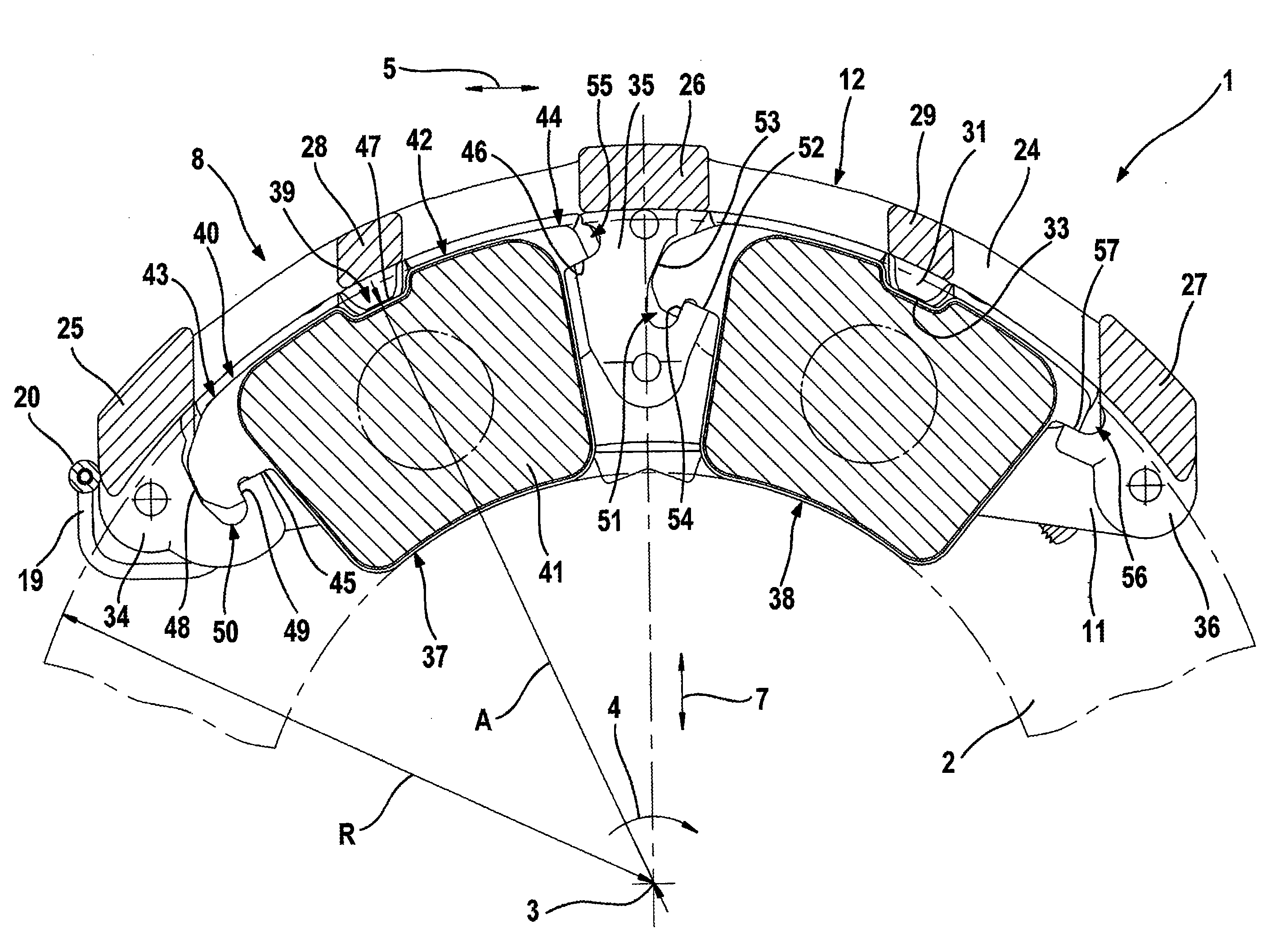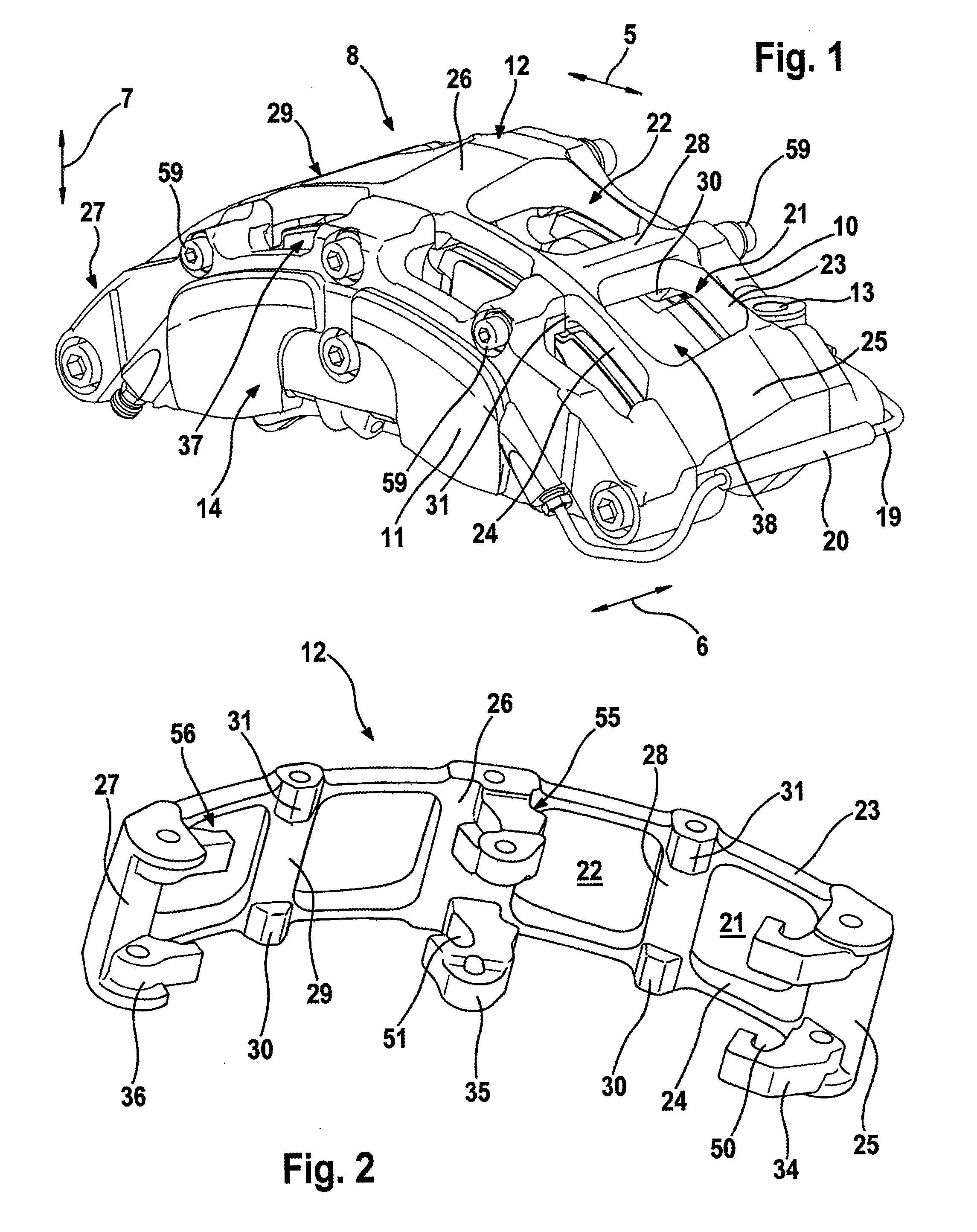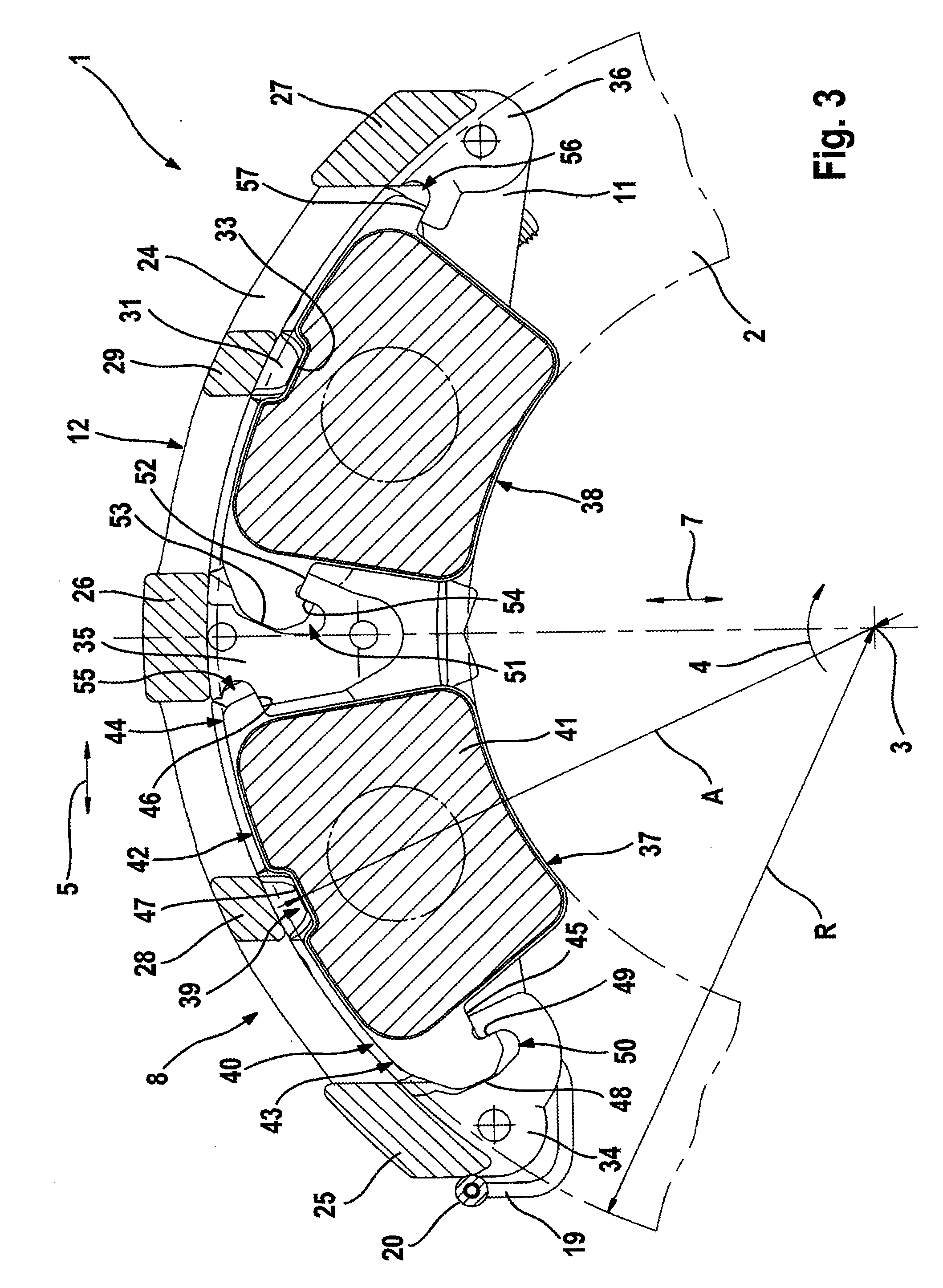Disk Brake
a technology for disc brakes and brakes, applied in the direction of brake elements, brake members, slack adjusters, etc., can solve the problems of relatively large installation space in the radial and peripheral directions of brakes, and achieve the effects of good thermal irradiation of components, low thermal stress, and loading of components
- Summary
- Abstract
- Description
- Claims
- Application Information
AI Technical Summary
Benefits of technology
Problems solved by technology
Method used
Image
Examples
Embodiment Construction
[0033]FIG. 1 to FIG. 6 show a first embodiment of a disk brake 1. This disk brake 1 comprises a brake caliper 8 which is embodied as a fixed caliper and which can be mounted permanently on a vehicle limb (not illustrated). In the mounted state, the brake caliper 8 engages axially around a brake disk 2 which is mounted so as to be capable of rotating about a rotational axis 3. In this context, the brake disk 2 runs through a shaft 9 extending through the brake caliper 8 in the peripheral direction 5, said shaft 9 being formed by a first caliper limb 10 facing the vehicle, a caliper bridge 12 and a second caliper limb 11 facing away from the vehicle. In the present case, the caliper limbs 10, 11 and the caliper bridge 12 are embodied as different components and are connected to one another by means of screws. It is also conceivable to embody the brake caliper in one piece. Substantially radially extending bores 13, by means of which the brake caliper 8 can be connected to the vehicle ...
PUM
 Login to View More
Login to View More Abstract
Description
Claims
Application Information
 Login to View More
Login to View More - R&D
- Intellectual Property
- Life Sciences
- Materials
- Tech Scout
- Unparalleled Data Quality
- Higher Quality Content
- 60% Fewer Hallucinations
Browse by: Latest US Patents, China's latest patents, Technical Efficacy Thesaurus, Application Domain, Technology Topic, Popular Technical Reports.
© 2025 PatSnap. All rights reserved.Legal|Privacy policy|Modern Slavery Act Transparency Statement|Sitemap|About US| Contact US: help@patsnap.com



